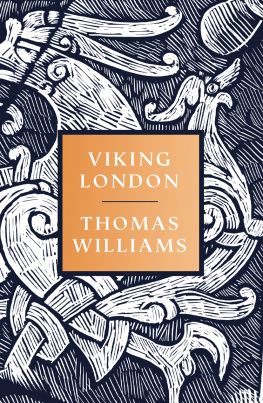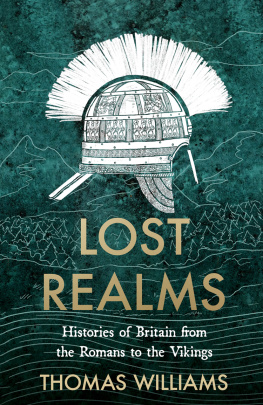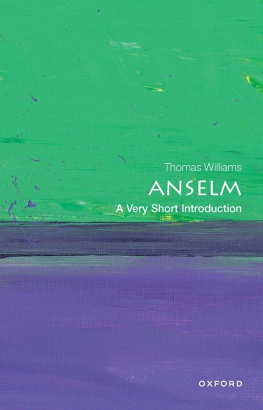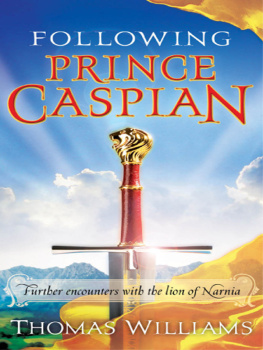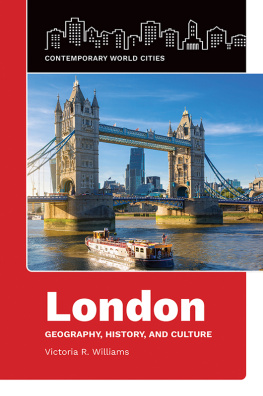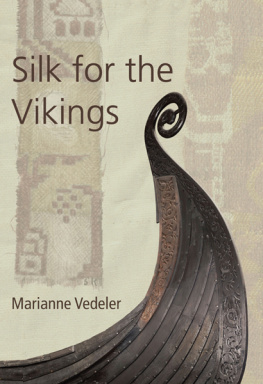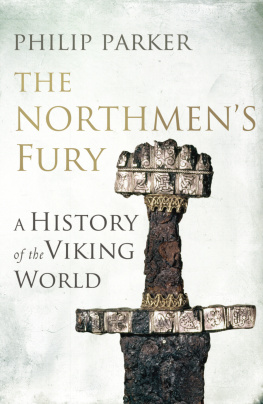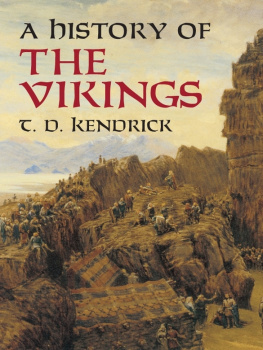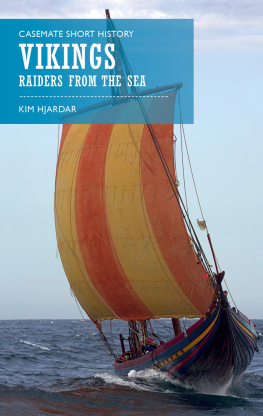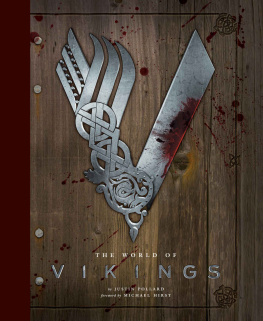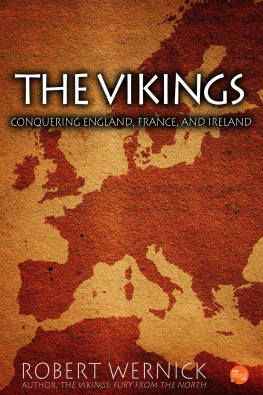Australia
HarperCollins Publishers (Australia) Pty. Ltd.
Level 13, 201 Elizabeth Street
Sydney, NSW 2000, Australia
http://www.harpercollins.com.au
Canada
HarperCollins Canada
Bay Adelaide Centre, East Tower
22 Adelaide Street West, 41st Floor
Toronto, ON, M5H 4E3, Canada
http://www.harpercollins.ca
India
HarperCollins India
A 75, Sector 57
Noida, Uttar Pradesh 201 301, India
http://www.harpercollins.co.in
New Zealand
HarperCollins Publishers (New Zealand) Limited
P.O. Box 1
Auckland, New Zealand
http://www.harpercollins.co.nz
United Kingdom
HarperCollins Publishers Ltd.
1 London Bridge Street
London, SE1 9GF
http://www.harpercollins.co.uk
United States
HarperCollins Publishers Inc.
195 Broadway
New York, NY 10007
http://www.harpercollins.com
Viking Britain
Thomas Williams is the author of the bestselling and critically acclaimed Viking Britain. He was a curator of the major international exhibition Vikings: Life and Legend in 2014 and more recently a curator of early medieval coins at the British Museum. Educated at UCL, he is a fellow of the Society of Antiquaries and has taught at the University of Cambridge.
W herever their ships ploughed the water, the Vikings made needles of rivers: a hypodermic rush of systemic devastation and steroidal vigour, wracking the veins of nations with the germ of change. In Dublin, York and Kiev, Iceland, Normandy and Russia, the Vikings planted the seeds of new realms and great cities, stoking the furnaces of trade, technology and industry wherever their keels ground the shingle and markets echoed with the jangle of slave-chains. They remoulded the world for ever, violence and commerce riding the whale-road from the north: twin sea-stallions of the Viking Age. In Britain the impact was profound: the Vikings remade the geopolitical map, changed the language, up-ended the dynamics of power and trade. Monasteries and settlements burned, ancient dynasties were extinguished. And nowhere in these islands was subjected to more aggression than London.
Between 842 and 1016 London was assaulted by Vikings on at least a dozen separate occasions. Sometimes it burned and sometimes it surrendered, mostly it stood firm when all others had given up hope; and throughout it all the city endured, remaking and remodelling itself, growing strong in adversity, unique in economic power, a crucible of cultures, enterprise and political intrigue: a maker of kings, the heart of a North Sea empire. This book is a sketch of London in the Viking Age, how it remade itself, how it was transformed by immigrants and natives, kings and commoners into the fulcrum of national power and identity. London emerged as a hub of trade, production and international exchange, a financial centre, a political prize, a fiercely independent and often intractable cauldron of spirited and rowdy townsfolk: a place that, a thousand years ago, already embodied much of what London was to become and still remains.
This book is also, however, a confrontation with the city that still sprawls beside the Thames a delving into its darkest age, an invasion of its privy parts.
Viking Age London is like an old wound, seemingly long healed and oft forgotten. But sometimes in the winter, when a cold wind blows from the north, it still nags an ache that will never go away. Stumbling around corners, feet catch on stitches, pull back the skin of modernity an ancient street name hidden beneath a concrete underpass, a paved void where a church no longer stands, a stretch of the old riverbank crawling out from beneath embankments. For nothing is lost in the city: things just sink further into the mire, deeper into time.
Occasionally, however, those memories break free, bursting upward like the hands of hungry corpses, or shimmering wraith-like through the alluvium. They hover like a miasma in the crypts of old churches or the depths of museum collections, drifting amongst beer cans at the blood-coloured foot of London Wall or blowing across the mud and shingle on the Thames foreshore. In these places the ghosts of Viking London still assemble, the murmur of lismen mingling with the banter of Victorian antiquarians, the chatter of tourists, the profanities of drunks. London is a city of spectres, of ghosts walking in the footsteps of other ghosts, and the Viking Age is perhaps its most forgotten hinterland.
And through it all runs the river, that titanic, oily-backed serpent. It winds its monstrous coils through Viking London through time and place, providing and devouring, poisoning and fattening before unravelling, unbound, into a mess of estuarine chaos, its mighty body dissolving to the sea.

T he Anglo-Saxon Chronicle relates that in the year 842 there was a great slaughter in London and in Quentovic and in Rochester. The Vikings had come to London.
By the 840s Viking raids had been a feature of British life for around half a century. The first raids occurred in Wessex and Northumbria at the end of the eighth century, but from the 830s onward Viking fleets had grown larger and the threat they posed more serious. West Saxon kings had faced Viking armies in pitched battle on a number of occasions; the king of Northumbria lost his life to a Viking raiding army in 844. The earliest raid on London that we know of is that of 842, but it was not necessarily the first. Fifty years earlier, in 792, King Offa of Mercia the Midland realm that at the time was the most powerful kingdom in southern Britain had a charter drawn up confirming the exemption of Kentish churches from various obligations that landholders normally owed to their royal overlords. It is an important document that helps to confirm that Offa was, at this stage, firmly in charge of south-east England. Some of the most interesting aspects of the charter, however, are the exceptions made for things that the churches of Kent were still obliged to finance in particular, an expedition within Kent against seaborne pagans arriving with fleets, or against the East Saxons if necessity compels, as well as bridge and fortress work in Canterbury to see the pagans off.
Put simply, the Church still had to pay for defences against pagan raids from the sea, and it seems clear from this that Vikings were already threatening the southern shores of Britain in Offas day. It also follows that there were many incidents of violence, destruction and theft which have left no trace in the written record. That does not necessarily mean that London had been targeted by earlier Viking raids, but it could well have been. The threat, at least, had been alive for more than half a century.
But even if it had suffered no Viking aggression, London would have been no strange port to Scandinavian mariners. Writing in the early eighth century, Bede famously described the city of London, which stands on the banks of the Thames, and is a trading centre for many nations who visit it by land and sea. Some of the imports came from further afield pottery and quern-stones from the Rhineland, figs from southern Europe and there may have been direct contact with Ribe in Denmark and, by the eighth century, with new trading ports at Kaupang (Norway), Birka (Sweden) and Hedeby (now in northern Germany).
Londons success as a trading centre was bound to the river. From the Rhine estuary, a westward journey pointed straight down the barrel of the Thames. From there the river was a navigable conduit deep into the west of Britain, with the city functioning as the gateway an entrept squatting at the hub of an overland travel network worn into the earth by millennia of falling feet. It was this location that had made London Londinium the

